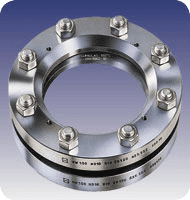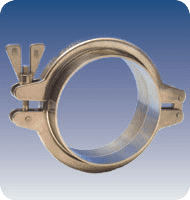Gabe Montgomery, Engineering Manager, Tank Components Industries, an L.J. Star subsidiary located in Springfield, Missouri, is one of several L. J. Star engineers to serve on important ASME Bioprocessing Equipment (BPE) Committees. His work on the committee is part of the company’s contribution to advancing the technologies that shape our industry and to keep our customers informed on changes in the field. BPE held several meetings in San Diego, California in May 2018, and Gabe reports back on what he heard:
The ASME BPE Subcommittee on Dimensions and Tolerances (DT) is working on a number of projects. The first of these is a project nearly 10 years in the making–a review of the hygienic clamp joint pressure ratings. The Subcommittee initiated a Task Group to begin an in-depth review of the current hygienic clamp joint pressure ratings listed in the standard, establish test procedures, and execute testing on several ferrule/gasket/clamp unions. The testing portion has been completed and the Subcommittee is currently analyzing the data and discussing what changes, if any, will be included in future versions of the BPE Standard.
As one of four projects stemming from a single end-user request, the Subcommittee established a Task Group to define “flatness” and “parallelism” within the context of BPE. Instances of these terms in the Standard have been reviewed and corrected in line with the current definitions. The Subcommittee is currently discussing inclusion of a flatness tolerance in the Hygienic Clamp Ferrule dimensions table, while tests are being conducted on how flatness affects the joint, in both the post-machined and post-welded conditions.
As the use of polymeric fittings in bioprocess systems grows, so does the need for proper fit-up and compatibility of Polymeric Hygienic Clamp Unions. The Subcommittee currently has a Task Group working on dimensional standards for these polymer fittings and components, much like those established for metallic fittings.
A Task Group is reviewing current requirements in Dimensions and Tolerances (Part DT) of bulk metallic tubing, and if and how the various requirements of tube components should differ from bulk tubing.

About the Author: Jeremy Sheldon
Jeremy Sheldon is Director of Life Sciences for LJ Star, responsible for working with customers in the Life Science industry for North America. Jeremy works with customers to offer the latest in sterile/sanitary technologies. Jeremy’s background includes a variety of sales and sales management positions within the life science industry.Subscribe to our Blog
Categories
- Certifications
- Company
- In The News
- Industry Information
- METAGLAS® Sight Glasses
- PackExpo 2020
- Sanitary Clamps
- Sanitary Fittings
- Sight Flow Indicator Benefits
- Sight Glass Applications
- Sight Glass Construction
- Sight Glass Lighting
- Sight Glass Lights
- Sight Glass Process Vessel Camera
- Sight Glasses
- Trade Shows
- Webcast



